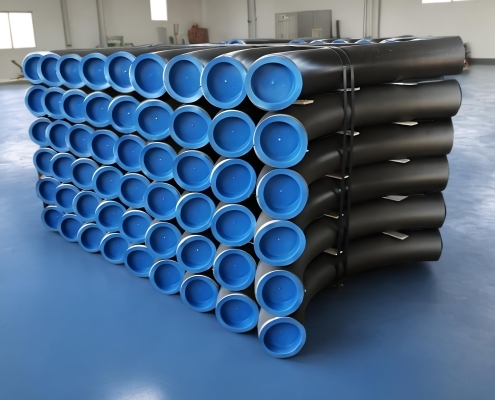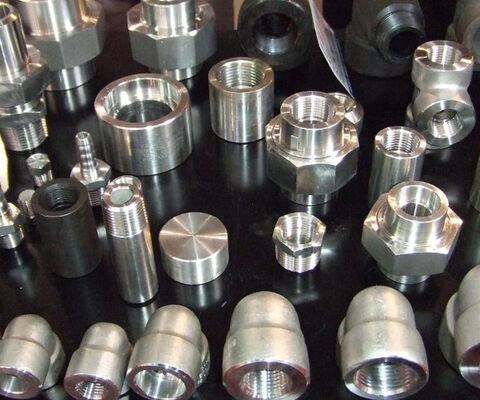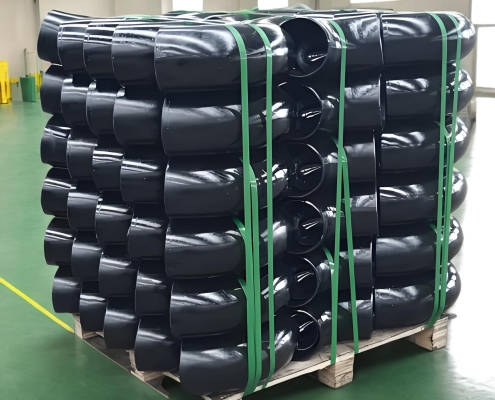Future Energy Steel offers an extensive range of pipe fittings designed for diverse industrial applications. Our offerings include ASME B16.9 buttwelding fittings and ASME B16.11 forged fittings, available in various sizes and materials. These high-quality fittings ensure reliable performance and durability in the oil and gas, chemical, power generation, and construction industries. Trust in our expertise for all your piping needs. Please contact [email protected] for a quote now!
FAQs
What is Pipe Fittings?
In piping systems, different methods are used to create connections and joints between pipes. Buttwelding, forged socket-welded, and threaded fittings are among the common techniques for these connections.
How Many Types of Pipe Fittings?
Pipe fittings are crucial components in piping systems, used to connect, direct, or control the flow of fluids. They come in various types and configurations to meet different operational requirements. Here’s a comprehensive overview of the common types of pipe fittings:
1. Elbows
Description: Elbows are used to change the direction of the pipe. They come in various angles and radius.
Types:
90-Degree Elbow: Changes the direction by 90 degrees.
45-Degree Elbow: Changes the direction by 45 degrees.
180-Degree Elbow: Turns the pipe back in the opposite direction.
Applications: Directional changes in plumbing, HVAC systems, and industrial pipelines.
2. Tees
Description: Tees have three openings and are used to branch off or combine flows.
Types:
Equal Tee: All three openings are of the same size.
Reducing Tee: One opening is of a different size than the other two.
Applications: Connecting pipes of the same or different sizes, splitting or combining flows.
3. Reducers
Description: Reducers are used to connect pipes of different diameters.
Types:
Concentric Reducer: Both ends are aligned along the same centerline, reducing diameter symmetrically.
Eccentric Reducer: One end is offset to maintain a horizontal flow line.
Applications: Changing pipe sizes while maintaining flow direction, and minimizing turbulence.
4. Couplings
Description: Couplings are used to join two pieces of pipe together.
Types:
Full Coupling: Connects two pipes end-to-end.
Reducing Coupling: Connects pipes of different diameters.
Applications: Extending pipe length or connecting pipe sections.
5. Caps and Plugs
Description: Caps and plugs are used to close the ends of pipes.
Types:
Cap: Covers the end of a pipe, providing a seal.
Plug: Fits into the end of a pipe to block flow.
Applications: Sealing off pipe ends, and testing pipe systems.
6. Nipples
Description: Nipples are short pieces of pipe with threads on both ends.
Types:
Close Nipple: Very short, with threads that meet end-to-end.
Extra-Long Nipple: Longer than a close nipple, used where extended length is needed.
Applications: Connecting pipes in tight spaces, extending pipe runs.
What Are the Main Types of Pipe Fittings?
Buttweld Fittings: Buttwelding involves welding two pieces of pipe together end-to-end. This method creates a strong, permanent connection and is commonly used in high-pressure and high-temperature applications.
Forged Socket-Weld Fittings: Forged socket-welded fittings are fittings that are designed to be attached to the pipe using a socket weld. These are typically used for high-pressure and high-temperature applications.
Threaded Pipe Fittings: Threaded pipe fittings are used to connect pipes via threads that are cut into the pipe ends and fittings. This method is generally easier and quicker to install compared to welding.





